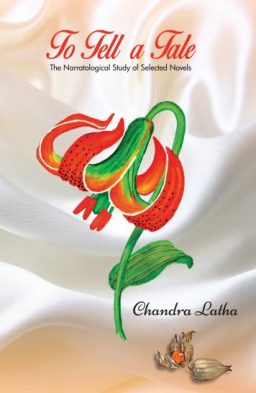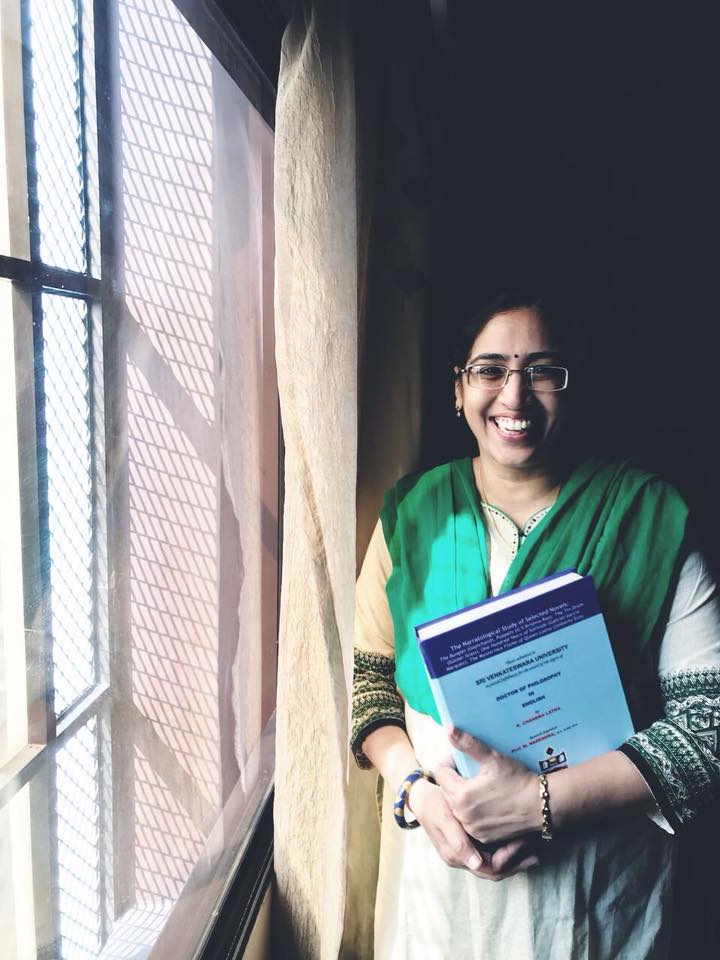
To tell a tale-4
-Chandra Latha
Chapter-I
(Part-3)
Narratology and Novel
In narrative theory, the actant is a term from the actantial model of semiotic analysis of narratives. Greimas’s actantial model reveals the structural roles typically performed in storytelling, such as “hero, villain (opponent of hero), object (of quest), helper (of hero) and sender (who initiates the quest)” and fulfill an integral component of the story, or, narrative. Without the contribution of the each actant, the story may be incomplete. Thus, an actant is not simply a character in the story, but an integral structural element upon which the narrative revolves. (Narrative Grammar: Units and Levels (A. J. Greimas MLN Vol. 86, No. 6, Comparative Literature (Dec., 1971), pp. 793-806 Published by: The Johns Hopkins University Press DOI: 10.2307/2907443 Stable URL: http://www.jstor.org/stable/2907443 Page Count: 14)
The concept of actant is important in structuralism of narratology to regard each situation as the minimum independent unit of story. Terence Hawkes observes,
[Linguistically], Actants have a kind of phonemic rather than a phonetic role: they operate on the level of function, rather than content. That is, an actant may embody itself in a particular character (termed an acteur) or it may reside in the function of more than one character in respect of their common role in the story’s underlying ‘oppositional’ structure. In short, the deep structure of the narrative generates and defines its actants at a level beyond that of the story’s surface content.” (Terence Hawkes. Structuralism and Semiotics Berkeley: University of California Press, 1977, Pg.89)
A.J. Greimas posits three pairs of binary oppositions which include six actants or roles; subject/object, sender/receiver, helper/opponent. According to Greimas these binary oppositions describe three basic patterns found in narrative (a) desire, search or aim (subject/object), (b) communication (sender/receiver), (c) auxiliary support or hindrance (helper/opponent ). (J. Greimas MLN Vol. 86, No. 6, Comparative Literature (Dec., 1971),The Johns Hopkins University Press http://www.jstor.org/ stable/2907443 Pg.793)
The founding father of modern structuralism, Ferdinand de Saussure proposed that ‘any sign consists of a ‘signifier’ and a ‘signified’ basically, a form and a meaning.’(Ferdinand de Saussure. (1916) Cours de linguistique générale, ed. C. Bally and A. Sechehaye, with the collaboration of A. Riedlinger, Lausanne and Paris: Payot; trans. W. Baskin, Course in General Linguistics, Glasgow: Fontana/Collins, 1977) For a narrative text, the signifier is a ‘discourse’ (a mode of presentation) and signified is a ‘story’ (a sequential action). Hence the narratological analysis consists of two important and primordial orientations, Discourse Narratology that analyses the stylistic choices that determine the form or realization of a narrative text and the Story Narratology that focuses on the action units employ and arrange a stream of events into a trajectory of themes, motives and plot lines. The essential binomial impulse is further strengthened by couplets Histoire/discourse, histoire/récit, fabula/ syuzhet and story/ plot.
The most influential contribution to Narratology of the recent times is that of the formalists differentiation of fabula and syuzhet in which the later is defined as the familiarization of the former. Derived from Latin, both terms fabula (Latin for fable) and syuzhet (From Subjectus, through French Sujet) have the similar meaning in the common usage.
The famous couplet fabula and syuzhet advanced by Russian formalists is deeply rooted, like any western theories of fiction, in Plato (428-348 BC) and Aristotle (384-322 BC) who attempted to find a distinction between ‘mimesis’( imitation) and digenesis (narrative). The fabula is the raw material of a story, and syuzhet, the way a story is organized. Fabula in Russian means story or plot. The fabula contains the entirety of the events that actually occurred, independent of the particular narration. Mostly found in complete omniscient perspective, Fabula may contain chronological format.
Syuzhet [also sjuzhet, sujet, sjužet, or suzet (сюжет)] means Plot or subject. But, to the Russian Formalists it is the way of telling the story i.e., the narration. It is limited to authorial detail. The sequence of the Syuzhet is the sequence of recounting and perspective may be limited and subjective to the author. Syuzhet is strictly literary or narrative entity structured by the author.
Fabula may be considered more fundamental of the two. Thus, Syuzhet is on a part of the true story, but, in literary point of view the Syuzhet is fundamental. Syuzhet is an objective entity as it is present in the literary work whereas, the Fabula is a product of the readers interpretation. Syuzhet modifies Fabula in two ways, Point of view and Time. According to Lodge and Genette point of view has two aspects. One is the voice who speaks the description of the action and the second, is perspective, who sees the action. In respective of the Time, Syuzhet may change the order, frequency or duration of events in the fabula. Time is modified in frequency and duration.
The metonymic relation between fabula and syuzhet needs to be understood as Syuzter selects certain parts of Fabula while omitting others. This choice or selection commonly meets the need to strengthen the important ‘events or aspects of the events’ and omits irrelevant ones. Hemingway believed that,” the omitted part would strengthen the story and make people feel something more than they understood.” (Ernest Hemingway. A moveable Feast.1964.Vintage.Pg.78)
The omitted or the elided events play a very important role as the author introduces tension, drama and ambiguity by omitting them. Hemingway asserts the important relation between the content and the construction. The fabula as the objective sequence of events versus fabula as the reader – constructed theory is important to understand the narrative fiction. The omitted part would strengthen the story and make people feel something more than they understood.” (Ernest Hemingway. A moveable Feast.1964.Vintage.Pg.78)
When structuralism theorists like Roland Barthes, Vladimir Propp, Joseph Campbell and Northrop Frye advocated that ‘all human narratives have certain universal, deep structural elements in common,’ the post-structural theorists like Michel Foucault and Jacques Derrida argued that ‘such universally shared deep structures were logically impossible’. Denouncing the priority accorded to fabula or sjuzet Jonathan Culler (1981) argues, ‘the operative assumption amongst many literary critics is that fabula precedes the sjuzet, which provides one of many ways of rendering what took place in the story’, (Jonathan Culler. The Pursuit of Signs: Semiotics, Literature, Deconstruction. Ithaca, NY: Cornell University Press. 1981. Pg.170-172) Culler argues that ‘one can also understand fabula as a production of the sjuzet, where by certain events are created and ordered at the level of story in order to produce a meaningful narrative.’ (Jonathan Culler. The Pursuit of Signs: Semiotics, Literature, Deconstruction .Ithaca, NY: Cornell University Press 1981. Pg.178).
But Jacques Derrida (1979) questions ‘the logo-centric hierarchic ordering of syuzhet and fabula.’ The question-of-narrative covers with a certain modesty a demand for narrative. If story is more than fabula, dominated by narrative, it could have its own manner of discourse, rather than being subordinate to narrative. Derrida further observes, ‘Each “story” (and each occurrence of the word “story” (of itself), each story in the story) is part of the other, makes the other part (of itself), is at once larger and smaller than itself, includes itself without including (or comprehending) itself, identifies itself with itself even as it remains utterly different from its homonym. (Derrida, Jacques. (1979). ‘Living On – Border Lines’ in Deconstruction and Criticism (NY: Seabury Press, edited by Harold Bloom et al., 1979, p.99-100).
Mikhail Bakhtin doesn’t consider that the relationship of narrative and story can be totally explained by that of fabula and syuzhet. The hegemonic relation that narrative has over story is questioned by Bakhtin who considers “Story is decidedly more dialogical’, for example in the “polyphonic manner of the story”, (Bakhtin, M. (1981). The Dialogic Imagination: Four Essays by M.M. Bakhtin (ed. Holquist, M.). Austin: University of Texas Press.Pg.12) and the “narrative genres are always enclosed in a solid and unshakable monological framework.” (Bakhtin, M.M. (1981). The Dialogic Imagination: Four Essays by M.M. Bakhtin (ed. Holquist, M.). Austin: University of Texas Press. Pg.60)
*****
(Contd..)

Chandra Latha, writer from Nellore won Telugu Association of North America award in 1997 for the novel “Regadi vittulu”. Her other novels are Vardhani(1995) and Vallu veellu paarijaataalu (2011). Her short fiction includes nearly 80 stories compiled in nenu nanna navutha (1996),Idam shareeram (2003) and vivarnam(2007). Her non-fiction are (Fish can fly!) ”vacche daretu(2010), itanala kadaku eeboothi boTlu(2010). And also published her blogposts in a book madata pejee(2010).
